 Welcome to Part Four of our WordPress Web Traffic Blueprint article series, where we show you how to automate traffic to your site using the WordPress CMS platform.
Welcome to Part Four of our WordPress Web Traffic Blueprint article series, where we show you how to automate traffic to your site using the WordPress CMS platform.
So far, we have covered the following in this article series:
In Part 1 of this series, we explain why using an expertly configured WordPress site is the key to automating traffic to your website …
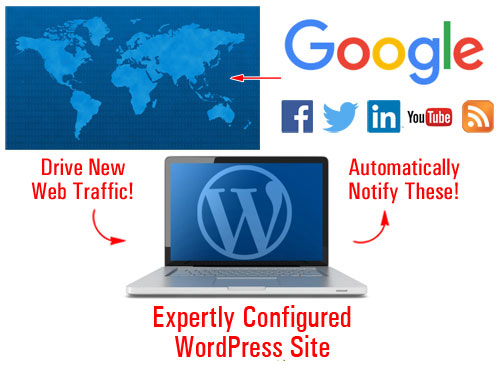
(With an expertly configured WordPress website, all you have to do is add new content on a regular basis to begin attracting more web traffic!)
In Part 2, we focused on the setup phase. We helped you understand the best way to get started if you don’t have a web presence yet, how to set everything up if you already have a website, and what to do if your existing website has been built using WordPress.
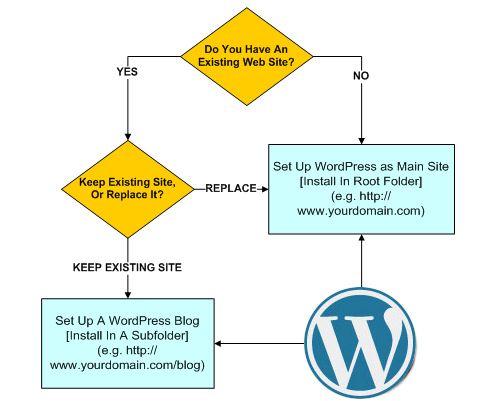
(In Part two we show you how to set up a WordPress website on your domain)
In Part 3, we discuss configuring WordPress.
Here, we configure hosting settings, internal settings, and external settings that affect your site’s ability to generate traffic automatically …
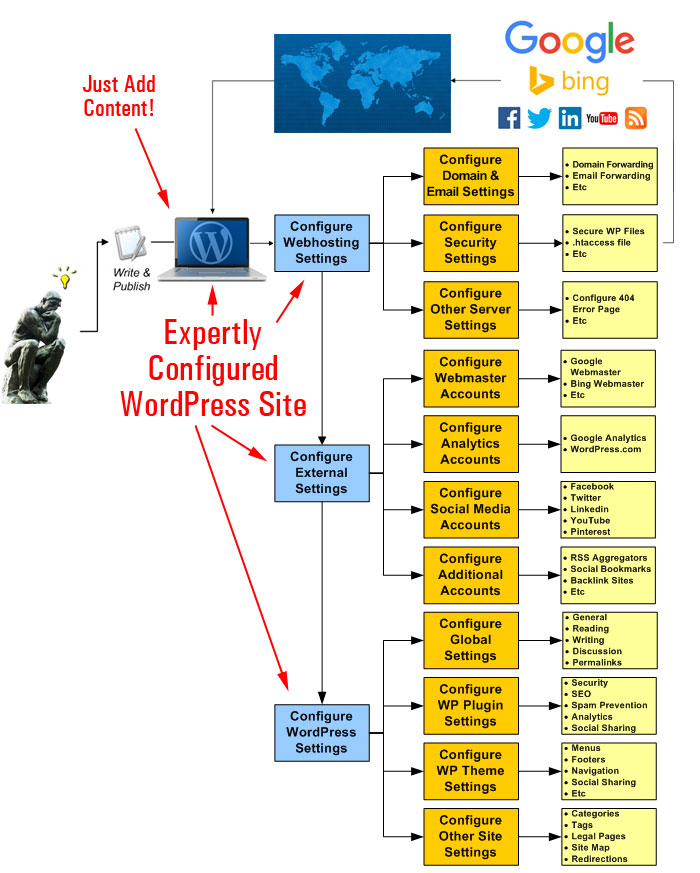
(In Part 3 we show you how to configure hosting settings, WordPress settings, and external settings that can affect your site’s traffic-getting ability)
In this section, you will learn how to set up various WordPress plugins that can help get new visitors automatically to your site.
Why Automating Your Traffic-Getting Process Makes Sense
Depending on which marketing guru you listen to, you could end up trying to spend 1-2 hours or more every day promoting your business on social media.
Most small business owners lack the time, human resources and budget to run a full-time marketing department and engage in the kind of content marketing that many marketing experts recommend. If you spent all of your time posting updates on Twitter, LinkedIn, or Facebook in addition to writing content for your website or blog, how could you get anything in your business done?
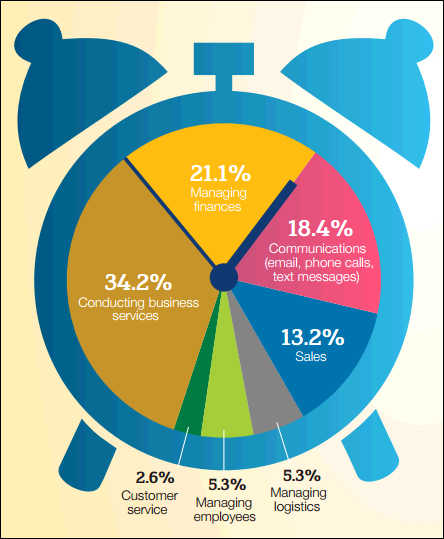
(Keeping their business up and running is how most small businesses spend their time. Infographic source: National Federation Of Independent Businesses)
Many businesses spend most of their time trying to keep their businesses up and running. On top of this, there’s also sales and marketing. After all, businesses need to stay competitive and grow in order to survive.
A study of small businesses done in 2012 by VerticalResponse – an email and social media marketing company, found that:
- Almost half of all small businesses surveyed spent at least six hours each week on social media (the rest spent even more time – between 6 and 21+ hours per week). This usage of social media was a 66% increase from the previous year, so if the same research was conducted today, the figures would most likely be even higher.
- More than half of all small businesses surveyed spent 1-3 hours or more creating a blog post.
- Finding and posting content for social media was their most time-consuming online activity.
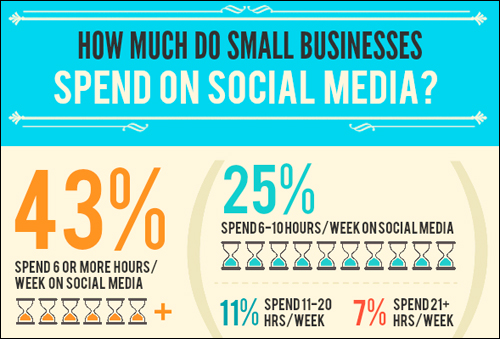
(Businesses spend more time each year marketing and promoting themselves online. Infographic source: VerticalResponse.com)
As businesses spend more time marketing and promoting themselves online as a matter of business survival and competition, this puts more and more of a squeeze on businesses to prioritize their time on other areas …

(Businesses with limited resources, time, and budgets and many different business areas to focus on have to plan their marketing strategy very carefully.)
One other important thing to consider is that, in addition to spending time marketing and promoting your business on a number of social sites, all of your efforts are going into virtual real estate that you don’t control. You don’t own Twitter, Facebook, or StumbleUpon. These sites can make decisions that impact your business without first consulting you. Why invest so much effort and time building a business on someone else’s real estate? With a self-hosted WordPress website, you can have complete control of your own virtual real estate and publish your content automatically to other sites.
Automating systems and process to save time is not new. Businesses of all sizes have been doing it ever since the Industrial Age. In the Digital Age, however, the exponential growth channels for marketing and promoting a business creates a number of dilemmas for small business owners, especially for those with limited time, resources, and budgets. For example:
- Which of these marketing channels should you focus more time, budget, and your efforts on?
- Should you invest so much time and effort building assets on sites that belong to other people (e.g. YouTube, Twitter, Pinterest, etc.) while neglecting the benefits of building content on your own website?
- Do you create new content for every channel you plan to include in your marketing strategy?
The Benefits Of Automating The Traffic-Getting Process With WordPress
What we’d like to share with you now, is a free, simple, and effective strategy for automating your traffic generation process with WordPress.
With this method, you will be able to:
- Save time creating content for your website or blog and social media,
- Save money on content creation and unnecessary online marketing costs,
- Determine which marketing channels you should focus more efforts, time, and your budget on,
- Invest most of your time and efforts building your own asset instead of someone else’s and still benefit from other people’s marketing channels.
![]()
Many automated web traffic solutions tend to focus on black hat methods, such as manipulating search engine results. This is not what the focus of this article series is about. In fact, we recommend avoiding black hat sites, tools, strategies, and anything that violates the terms of service and policies of companies like Pinterest, Google, Facebook, etc..

(Automating your web traffic doesn’t need to involve using black hat methods!)
The purpose of this article series is to show you how to automate your content distribution in order to leverage your time and marketing efforts, and get additional exposure online from sites frequented by your target audience.
An Automated Content Distribution, Traffic And Lead Generation, And Sales & Marketing System
We’ve just seen in the previous section that most small businesses lack the time, human resources and budget to engage in the kind of content marketing that many experts are prescribing. What you want to do, then, is work smart within your limitations.
So, instead of posting content to each different service, which is extremely time-consuming …

(Posting content to services individually can be very time-consuming!)
Why not use this strategy instead …
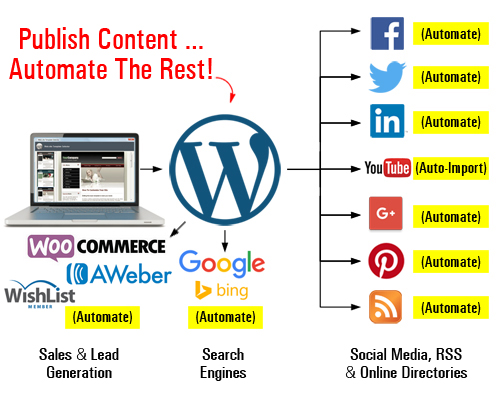
(Set up an automated content distribution, lead and traffic generation, and sales and marketing system with WordPress)
With an expertly configured WordPress site, you can build more than just a website for your business … you can set up an automated traffic and lead generation and sales & marketing system, where all you do is publish your content and WordPress then automates the rest.
With WordPress, you can publish content once, and automate the distribution of your content to all other services.
You can:
- Distribute content automatically to social services and bookmarking sites,
- Automatically distribute content (and comments) to other blogs and web properties using RSS
- Import content automatically (e.g. videos)
As your business evolves, you can add more functionality and automate processes like:
- Sell products and services with e-commerce,
- Capture leads with opt-in forms and add your subscribers to newsletters and autoresponders,
- Allow visitors to register on your site with different membership levels,
- And so much more!
You can do all of this using inexpensive WordPress plugins. Once these plugins are installed and configured on your site, just direct your visitors to the appropriate sections (e.g. your store, subscription forms, membership area, etc.)
How do you get all this done?
Simple … first, set up your WordPress website or blog as explained in Part Two. Then, configure it as explained in Part Three. Once all of this is in place, you can then connect all of the dots with plugins.
The video below shows you how everything works once your WordPress site has been expertly configured …
WordPress Web Traffic Blueprint – Traffic Plugins
Let’s take a quick look at a few traffic-generating WordPress plugins that can help to:
- Post content to social media sites and social bookmarking accounts
- Syndicate comments automatically to other blogs
- Distribute content via RSS feeds to other sites
Jetpack WordPress Plugin
You can get your posts automatically distributed to sites like Twitter, Tumblr, Facebook, GooglePlus, LinkedIn and more as soon as you publish your content using a plugin like JetPack.
Download URL: https://jetpack.com/
Jetpack is a free WordPress plugin with many great functions.
After Jetpack has been installed, you will need to connect the plugin to your WordPress.com account …
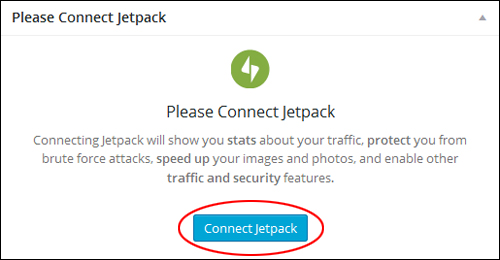
(Connect Jetpack to your WordPress.com account)
Next, activate a feature called Publicize …

(Jetpack plugin – Publicize)
Once this section is configured, you will be able to automatically share your posts on Facebook, Twitter, Tumblr, LinkedIn, GooglePlus, and more …

(Share your content automatically on various social sites.)
After configuring all plugin and account settings, your content is ready for distribution.
Publicize adds a new section to your Publish box …

(Publicize details show in the Publish section.)
Now, as soon as you publish a new post, it will automatically be shared online to all of the accounts you have set up …
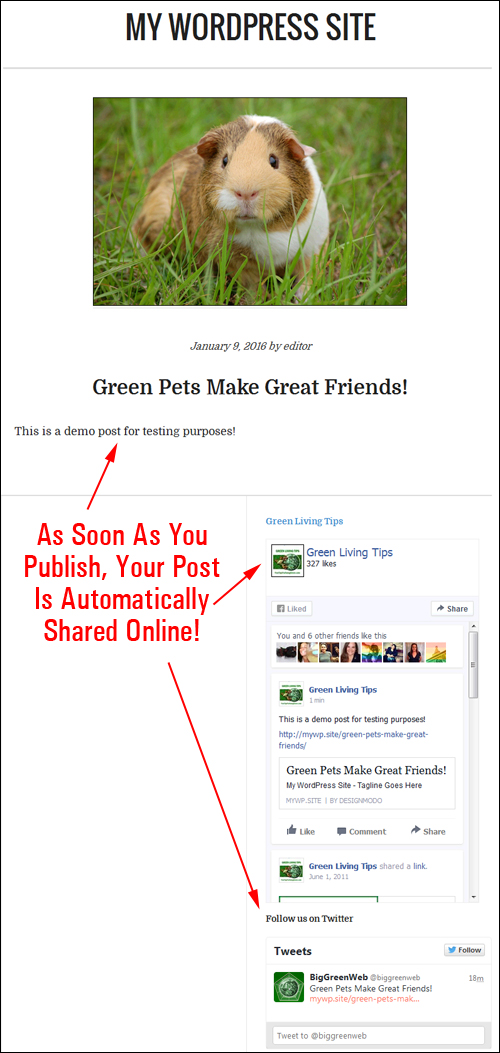
(As soon as you publish, your new posts are automatically distributed online.)
Go here to learn more about the benefits of using this powerful plugin: Jetpack by WordPress.com
CommentLuv
(CommentLuv)
The WordPress built-in commenting system allows your blog readers to interact with your website or blog, post comments, reply to existing comments and engage with your content.
You can expand the WordPress native commenting feature with 3rd-party plugins like Disqus, IntenseDebate, LiveFyre, or CommentLuv that integrate your comments with social media, helping to spread and share them around.
For example, with a plugin like CommentLuv (Pro version), you can improve user engagement on your web site. The plugin encourages readers to comment using SEO and social rewards like adding twitter handles to comments, ability to use keywords in the user name, search-indexable backlinks, and social enticements for content-sharing. This plugin will visit the website of the comment author while they are typing their comment and retrieve their latest blog posts, which they can choose to include with their comment when they click the submit button.
(CommentLuv Pro version can encourage a greater level of commenting and improve user engagement on your web site.)
To learn more about the benefits of using this handy plugin, go here:
SocialLinkMachine
(SocialLinkMachine – WordPress content distribution plugin)
SocialLinkMachine is a plugin that lets you syndicate your content to many traffic-generating platforms, build backlinks, include relevant images and videos, and 2nd-tier links and social signals on auto-pilot …
(Social LinkMachine – syndicate content automatically to dozens of authority sites)
With Social Link Machine installed, you can automatically drip-feed your content to many social sites, such as:
- Bookmarking Platforms: e.g. Deviantart, Folkd, Plurk, Reddit, etc.
- Web 2.0 Blogging Platforms: e.g. Blogger, Sett, Tumblr, etc.
- Social Media Platforms: Facebook, Twitter, etc.
- Image Sharing Platforms: e.g. Flickr, etc.
- Document Sharing Platforms: e.g. Issuu, Scribd, etc.
Go here to learn more about this plugin: Social LinkMachine
Also, if you would like to know more about setting up social media monitoring (so you can get useful information about your content marketing efforts), we have written a detailed article on social media monitoring tools and technologies that will help you manage, measure, and analyze your social media marketing initiatives. Go here to learn more about this:
![]()
The above are just some examples of the many plugins that WordPress makes available for automating the distribution of your content online.
Kickstart Your WordPress Traffic System
After your traffic automation system has been set up, we recommend kickstarting the process of driving traffic to your site with the steps shown in this tutorial:
WordPress Traffic Automation System: Automated Content Distribution Process – Summary
Once you have your website or blog and plugins expertly configured and set up, all you need to do to automatically begin attracting more traffic is post web content consistently.
![]()
We have created a complete email series designed to help you never run out of content for your website:
Once you have configured your WordPress site, the next step is to optimize the web-traffic generation process. This step is covered in the next section of the WordPress Traffic System series.
This is the end of Section 4
To continue reading this article, click on the link below:

***
"I am beyond impressed with what you have put together. I can tell that you put a ton of hard work into building what you have. You have the absolute best content on WordPress I have ever seen!" - Robert T. Jillie
***




